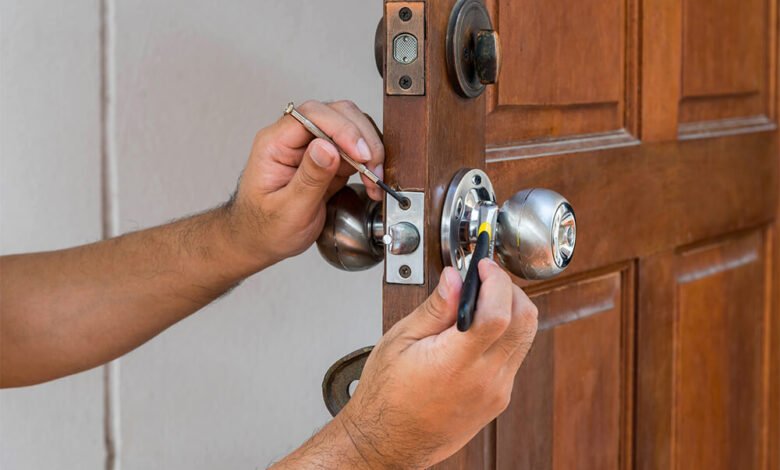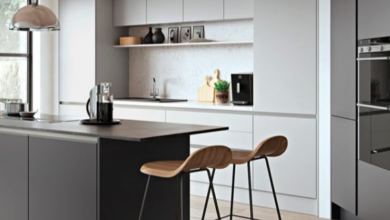How to Change a Lock on a Locked Door

Finding yourself wanting to change a lock while the door is still locked is a common — and sometimes stressful — situation. Maybe you lost keys, moved into a new place, or a tenant moved out.
Changing the lock without access to the interior is possible, but it’s a different process than swapping a lock when the door is open. Below is a clear, responsible guide that explains your options, basic steps you can take, and how professional locksmiths make the whole job far easier and safer.
Before You Start: Check Ownership and Legality
If the door is not yours (rental property, shared building, etc.), don’t change the lock without permission — this can cause legal trouble. If it’s your property or you have the owner’s permission, proceed. If you’re unsure or the situation involves a dispute, contact the property manager or a locksmith who can advise you.
Two Main Routes: DIY (when you have a way in) vs. Professional Help
- If you have a spare key or can open the door, you can change the lock the normal way — remove the existing hardware, install the new lock or cylinder, and test it.
- If you do not have a key / cannot open the door, you have limited DIY options and should strongly consider calling an auto/house locksmith. Professionals can provide non-destructive entry, rekeying, or replacement quickly and legally.
Safe DIY Options (Only When You Can Open the Door)
- Open the door with a spare key or from inside.
- Remove the existing lock:
- Unscrew the doorknob/lever rose screws and interior plate.
- Remove the latch/bolt from the edge of the door.
- Extract the cylinder (if it’s a pin-tumbler style) or remove the entire lock body.
- Install the new lock or cylinder: follow the manufacturer instructions, align the latch and strike plate, tighten screws, and test operation.
- Rekeying (optional): Instead of replacing the whole lock, you can rekey the cylinder so old keys no longer work. Rekey kits exist, but rekeying requires correct pin sets and some skill.
When the Door is Locked and You Don’t Have a Key — Realistic, Responsible Options
- Check for alternate access: Any other unlocked entry? A window? A back door? If so, use that legally and safely to change the lock from the inside.
- Call a professional locksmith (recommended): A trained emergency local locksmith will verify your identity/ownership and then offer options:
- Non-destructive entry (lock picking or bypass) so the lock stays intact.
- Cylinder removal from the outside (if the lock type allows) and replacement.
- Drill only as last resort — if the lock is frozen, high-security, or cannot be picked, drilling out the cylinder lets them replace it quickly.
- Rekeying or full replacement once inside, plus new keys.
- Emergency services: Some locksmiths offer 24/7 emergency visits — useful if safety is at risk.
How Locksmiths Make Things Easier
- Speed and non-destructive solutions: A pro often opens the door without drilling, preserving the lock so you can rekey rather than replace.
- Correct tools and experience: Locksmiths have specialty picks, bypass tools, code machines, key-cutters and knowledge of modern locks (including smart locks and keyless systems).
- Security advice: They’ll recommend the best upgrade for your needs — deadbolts, high-security cylinders, reinforced strike plates, or smart locks.
- Proof and documentation: Reputable locksmiths verify ownership, which protects both you and them. They also provide receipts and sometimes guarantees on their work.
- Extras: Rekeying multiple locks to a single key, duplicating keys on the spot, replacing smart-fob or transponder keys (for vehicles and some doors).
Practical Tips and Cautions
- Avoid DIY break-ins: Don’t attempt aggressive methods (DIY drilling, destructive shimming) unless you accept the damage and legal risks.
- Keep ID and proof (utility bill, lease, or ownership documents) handy if you call a locksmith.
- Ask for an estimate before work begins, and ask whether the locksmith Bishops Stortford aims for non-destructive entry first.
- Consider upgrading to a higher-security lock or deadbolt if keys are lost or tenancy changed — a single new cylinder can save future headaches.
Final Words
Changing a lock on a locked door is doable, but the safest, fastest, and often most cost-effective approach is to call a qualified locksmith. They’ll confirm ownership, open the door with minimal damage, and either rekey or replace the lock and give you new keys — plus expert advice to improve security going forward.
If you have access already, the DIY route is straightforward; if you don’t, professionals exist to make the process simple, legal, and secure.




